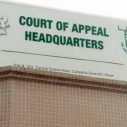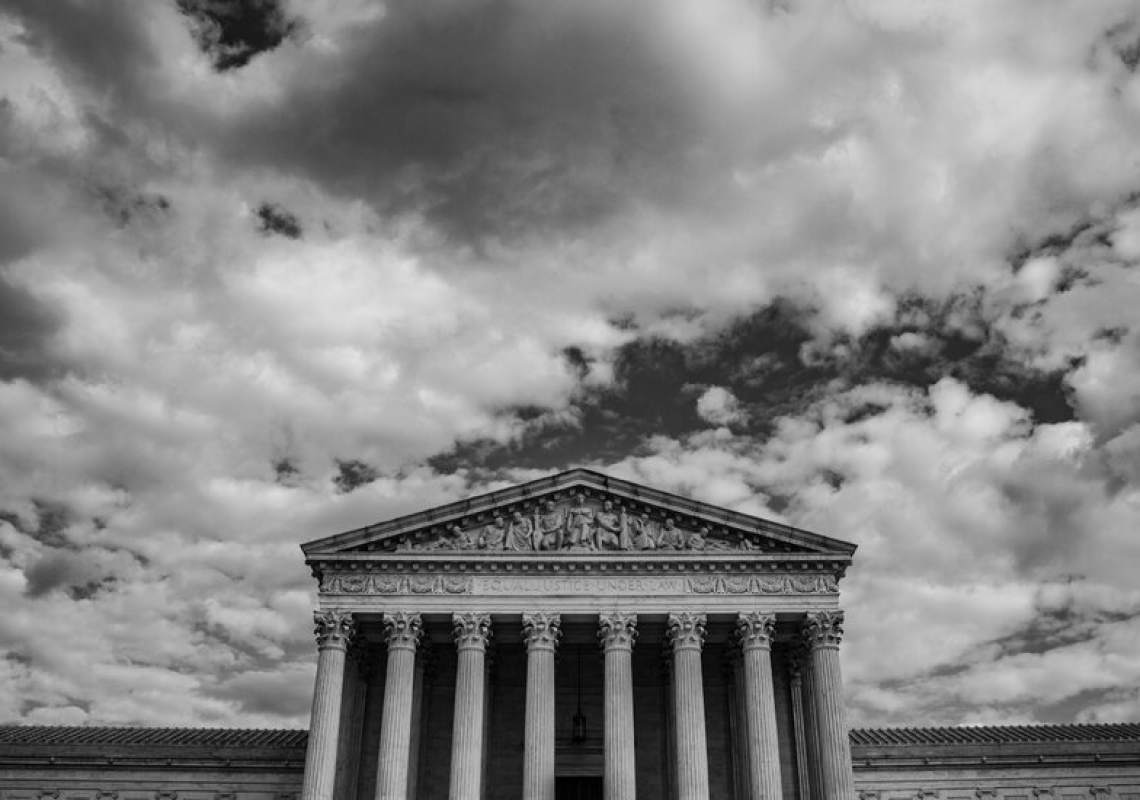Advertisement
Supported by
Guest Essay
Send any friend a story
As a subscriber, you have 10 gift articles to give each month. Anyone can read what you share.
By Barry P. McDonald
Mr. McDonald is a law professor at the Pepperdine Caruso School of Law who focuses on constitutional law and the Supreme Court.
The Supreme Court has come under increasing scrutiny for its so-called shadow docket: rulings issued on an expedited basis without the full briefing, argumentation and written opinions that cases on its main docket receive. These rulings are often divided along partisan lines, as seen in a recent, and controversial, example: the conservative majority’s rejection of a request in September to pause a Texas abortion law until it could be more fully reviewed.
But an even more problematic aspect of the court’s shadow docket has received scant attention. These are opinions being issued by justices when the Supreme Court rejects an appeal of a case from a lower court — what are called “cert denials,” or denial of petitions for certiorari.
Since Congress gave the court discretion in the early 1900s over which appeals to review, cert petitions have multiplied to the point where roughly 1 percent are granted (it takes the vote of at least four justices to grant a petition). And since the denial of cert leaves the law in place as decided by the lower courts, it is not an exaggeration to say that most federal constitutional and statutory law is made by those courts.
Perhaps this is why, off and on since the mid-20th century, certain justices have taken to issuing individual opinions in connection with cert denials (what I’ll call “cert-denial opinions”). Typically the justice will object to the way the lower court applied the law or complain about how earlier Supreme Court decisions themselves created bad law and should be revised.
Cert-denial opinions offer insights into the thinking of individual justices, but the practice of issuing them is rife with problems and should be largely abandoned.
First, they have no legal effect and are mainly issued by justices today to promote their personal ideological agendas. Conservative justices frequently issue them to complain about how the law was applied in hot-button cases to either disfavor free speech, free religion or gun rights or to improperly favor abortion or L.G.B.T.Q. rights. Liberal justices just as frequently issue them to complain about how death penalty or other criminal justice matters were handled.
To cite just two recent examples, Justice Clarence Thomas issued such an opinion to decry the court’s 2015 ruling establishing a right of same-sex marriage and how it is operating to cast some religionists who believe in traditional marriage as bigots. In another one, Justice Stephen Breyer pushed his view that the death penalty is unconstitutional and worried that in the cases before him the jurors might not have imposed it had they been aware of its problems. Justice Thomas responded in his own opinion “to alleviate Justice Breyer’s concerns” by describing how brutal the underlying murders were and partly blaming Justice Breyer himself for some of the problems with capital punishment.
At a time when the public is losing confidence in the Supreme Court as an apolitical dispenser of equal justice — and indeed when increases in violence against federal judges are being attributed to perceptions that they rule on the basis of their politics — unnecessarily issuing these opinions just stokes partisan divisions.
Perhaps more important, the practice of issuing cert-denial opinions is legally objectionable. The Constitution authorizes judges to exercise power as necessary only to resolve live cases or controversies. The original idea was that Congress and the president — political branches answerable to the people — should do most of the governing. Conversely, judges given life tenure and salary guarantees in order to referee legal disputes in a politically impartial manner should be limited to performing that role.
But when a justice issues an opinion in connection with a dispute that the court has expressly declined to decide, the justice is acting outside this narrow constitutional mandate and using his or her position to influence social issues in just the way the framers thought should be left to the people and their elected representatives to resolve.
When the court declined in 2019 to accept an appeal of an Indiana law prohibiting abortions motivated by the sex, race or disability status of the fetus, Justice Thomas attached a long opinion indirectly arguing in favor of such laws by linking abortion to early-20th-century eugenics practices. Later that year, Justice Brett Kavanaugh strongly signaled that with his appointment to the court, there were a majority of conservative justices receptive to overturning old rulings giving Congress wide latitude to delegate lawmaking powers to administrative agencies. Far from acting as the dispassionate umpire of legal disputes the framers envisioned, Justice Kavanaugh was basically suggesting that new lawsuits seeking profound changes to our current system of government would be favorably received.
The issuance of cert-denial opinions also creates impartiality problems for justices obligated to resolve cases in as neutral, unbiased and fair-minded a manner as possible. To enable them to do this, the Constitution gives justices a strong position of independence from political pressures. Moreover, a federal statute reinforces this constitutional norm by requiring any justice or other federal judge to “disqualify himself in any proceeding in which his impartiality might reasonably be questioned.”
And it has become routine for nominees to the court, in their Senate confirmation hearings, to refuse to answer questions about controversial legal issues like abortion and gun rights on the grounds that they might be prejudging an issue that could come before the court.
In cert-denial opinions, however, justices frequently prejudge legal questions in ways that create serious impartiality problems in cases the court later accepts for review. A stark example of this is the challenge to New York’s requirement that people demonstrate a special self-defense need for carrying concealed firearms in public that the court is hearing on Wednesday. In a cert-denial opinion issued by Justice Thomas last year, when the court denied review of a ruling upholding a New Jersey concealed-carry requirement similar to New York’s, he made a lengthy historical argument concluding that the Second Amendment protects some form of public carrying of firearms.
Perhaps not surprisingly, this is the argument now being made by the gun rights’ plaintiffs in the New York case. Just as troubling, in a portion of Justice Thomas’s opinion that Justice Kavanaugh joined, they criticized the main lower court ruling upholding New York’s concealed-carry requirement. How can anyone seriously contend that the impartiality of these justices cannot “reasonably be questioned” in the New York case?
Some might argue that justices also create future impartiality problems when they issue unnecessary separate opinions or make gratuitous comments in cases the court actually does decide. These practices are not ideal and have been criticized, but in these situations at least the justices are issuing them in connection with deciding cases or controversies as authorized by the Constitution.
Finally, cert-denial opinions can be highly misleading. Justices typically do not publish their reasons for voting to deny cert in a case. Hence, when an unhappy justice issues an opinion explaining why the lower court incorrectly applied the law, this could be a viewpoint at direct odds with the majority of justices (indeed, there is a common perception that cert denials frequently signal the court’s satisfaction with the lower court ruling). But because of the gravitas associated with being a justice, lower courts will sometimes cite cert-denial opinions as binding or persuasive authority as to what the law is to decide their own cases.
This problem recently erupted on the court. In 2017, Justice Sonia Sotomayor wrote a cert-denial opinion criticizing an Alabama court’s rejection of a death penalty appeal. A later federal appellate court relied heavily on Justice Sotomayor’s opinion to overturn the state court decision. When that decision was appealed to the Supreme Court last summer, in a 6-3 ruling, the conservative justices summarily reversed the lower court and issued a thinly veiled criticism of both the cert-denial opinion and the lower court’s reliance on it.
When a new justice is sworn into office, he or she takes two oaths: to be faithful to the Constitution and to impartially administer justice. The unnecessary issuance of cert-denial opinions creates substantial tension with both goals. This part of the court’s docket would do well to slip back into the shadows from where it emerged.
Barry P. McDonald is a law professor at Pepperdine University and the author of the paper “SCOTUS’s Shadiest Shadow Docket.”
The Times is committed to publishing a diversity of letters to the editor. We’d like to hear what you think about this or any of our articles. Here are some tips. And here’s our email: letters@nytimes.com.
Follow The New York Times Opinion section on Facebook, Twitter (@NYTopinion) and Instagram.
Advertisement






